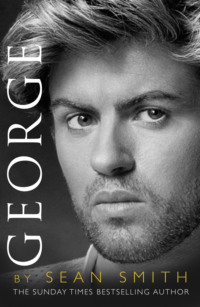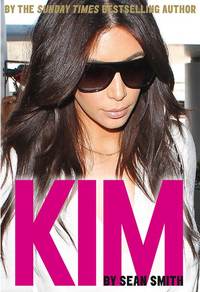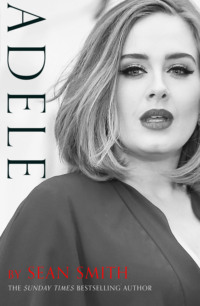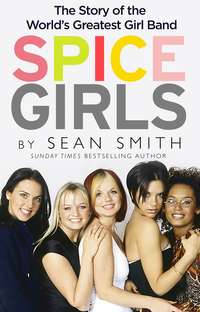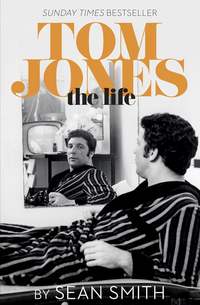
Полная версия
Meghan Misunderstood
At Ruth’s school, all children were accepted and nurtured for who they were as individuals. It was a perfect fit for Meghan as far as Tom and Doria were concerned. Ruth had officially retired in 1970 and her daughter had taken over, but she was still part of the furniture of the place, living to the grand age of 96. She would wave to the children from her balcony as they came into school and they would call up ‘Good morning Miss Ruth’ or ‘Hello Grandma’.
Back in the early days the most famous former pupil at the school was the fifties’ bombshell Jayne Mansfield. Now, it’s Meghan Markle, although in Hollywood terms it remains to be seen whether Johnny Depp’s daughter, the actress Lily-Rose Depp, becomes a household name. Despite one or two well-known alumni, this was not a celebrity or elite school.
Doria had moved into a spacious second-floor apartment on South Cloverdale Avenue, three miles from the school. It may not have been as leafy as Woodland Hills but the street was wide, clean and tidy with small front lawns dotted with flower borders and palm trees. It was a pleasant, safe neighbourhood in midtown LA.
To help pay some bills and also because she didn’t want to be stuck at home all day, Doria started looking for work. Under the terms of the divorce agreement, Tom had joint custody and agreed to pay $800 a month towards Meghan’s upbringing. While Tom could afford the school fees at the Hollywood Schoolhouse, pupils whose parents could not meet them could apply for assistance grants. The school was quite liberal-thinking in its attitudes at a time when it would not have been derided as ‘woke’.
Intriguingly, it was during her time at elementary school that the first signs of the two passions in Meghan’s life began to form: standing up for what was right and wanting to be a performer. For the former, Debbie Wehbe, who was headmistress while she was a pupil there, gives credit to both Tom and Doria for encouraging her ‘belief systems’.
Meghan’s love of performing was evident at the annual end-of-year shows when all the children were encouraged to make the best use of their talents. When she was five, Meghan took centre stage to sing the old favourite, ‘The Wheels on the Bus’. Right from the start, Tom would be there proudly taking photos of his daughter. He literally took pictures of her every day.
Importantly, Meghan found a best friend at the school. Ninaki Priddy, known as Niki, would turn out not to be a friend for life, but growing up they shared many memorable moments. For Niki’s ninth birthday party, Meghan took a leading role in a jokey, spontaneous show where she pretended to be a queen surrounded by her servants. The whole thing was captured on video by Niki’s mum Maria and was just some back-garden fun, but it did reveal how much the camera loved Meghan and, even at this age, she could be the centre of attention in any group. Over the years, Niki collected almost as many shots of Meghan as Tom Markle did, diligently sticking into albums happy photographs of the two girls at home, at school or on trips abroad.
From an early age Doria encouraged Meghan to be aware of the whole world and not just her little patch of Los Angeles. She was working for a travel agency that opened up opportunities to take her daughter with her on some wonderful holidays. While there was sun and beaches, culture and laughter, there was the occasional more sobering experience of those less fortunate.
She took her to see the slum areas of Jamaica, a genuine eye opener for a little Californian girl who could scarcely comprehend the unbearable poverty of what she was seeing. Her mother had soothing words: ‘Don’t look scared, Flower. Be aware but don’t be afraid.’
In Oaxaca City, in southern Mexico, she saw for herself poor street children selling sweets to earn a few pesos to buy food. It was a stark dose of reality that illustrated the unfairness in the world. Doria had taken Meghan there for the famous Day of the Dead Festival – ‘Día de los Muertos’ – which is nothing like as grim as it sounds. The celebration, which begins on Halloween, marks the three days when the spirits of lost loved ones visit the living and is infused with a sense of fun and a carnival atmosphere: truly a party spirit.
Meghan fell in love with Mexico – the people, the culture and, perhaps best of all, the food. But she never forgot her mum’s life lessons. In one of her essays for Elle magazine, she wrote, ‘My mum raised me to be a global citizen with eyes open to sometimes harsh realities.’
Doria also encouraged Meghan from about the age of seven to join her for ‘mommy-and-me’ yoga sessions. Meghan was not keen: ‘I was very resistant as a kid but she said, “Flower, you will find your practice – just give it time.”’ As with many things, Doria would be proved right in the end.
It’s too easy to say that it was Tom who encouraged her acting while Doria was more serious. She spent most of her time with a mum who had more boundaries and limits in place, but Doria still liked to have fun and would dance carefree around the apartment to her favourite music. She loved the mellow soul of Al Green. And Tom was there when needed to lend a hand and support her ideals. Generally she would spend the week at her mother’s and weekends with her father. When he dropped her back, the three of them would usually sit down, eat dinner from a tray on their laps and watch the game show Jeopardy! together.
Both parents strengthened her social awareness and they were both givers, much more so than takers. They would deliver meals to people in hospices, dig out the coins in their pockets for the poor living on the streets and at Thanksgiving they would buy a turkey or two for the homeless shelters. These gestures helped to form Meghan’s character.
A grim period in modern Los Angeles history also had a lasting effect on her. In 1991, when Meghan was ten, police officers in the city were caught on film giving a savage beating with batons to a black motorist called Rodney King. His injuries included skull fractures, broken bones and teeth and permanent brain damage.
The following April, a predominantly white jury with no African–Americans found four police officers not guilty of using excessive force, even though the beating had continued for fifteen minutes. Los Angeles erupted into five days of rioting and violence. It seemed that everywhere in South Central LA something was being set on fire and the whole area resembled a war zone. There was nothing remotely Hollywood about this.
Meghan and her schoolmates were sent home for their safety. She remembered there was ash everywhere, settling on lawns and porches. Meghan shouted, ‘Oh my God, Mommy, it’s snowing.’ Doria responded firmly, ‘No, Flower, it’s not snow. Get in the house.’
Meghan’s social conscience was well-developed for her age. The current headmistress of the Hollywood Schoolhouse, Ilise Faye, observed: ‘She had a voice. She was one of those children that would stand up for the underdogs. She would stand up for what she believed in, and she was the leader among her friends.’
That leadership was evident when she heard that one of her classmates was upset about the Gulf War. The boy in question was in tears because his elder brother was in the military and was due to fly out to the Middle East. Meghan helped to organise a protest at her school against the conflict, carrying a homemade placard that stated, ‘Peace and Harmony for the World’.
The following year, at the age of eleven, Meghan’s class had a social studies assignment that involved watching and commenting on various advertisements. First up was one for Robitussin cough syrup, which suggested it was ‘Recommended by Dr Mom’. Meghan’s response was what about ‘Dr Dad’?
The commercial that had the biggest effect on her, however, was for Ivory clear dishwasher liquid, a kitchen product from corporation Proctor & Gamble. She couldn’t help but notice that it began, ‘Women are fighting greasy pots and pans …’
She was angry at the blatant sexism: ‘I said “wait a minute, how can they say that?!”’ She was even less impressed when two boys in the class piped up, ‘Yeah, that’s where women belong, in the kitchen.’ That evening she told her dad all about it and he suggested that she write to the company in person. She sat down and composed a letter in her already immaculate handwriting urging them to change the wording of the commercial to ‘People are fighting greasy pots and pans’.
Tom also suggested that she write to some powerful people as well, so she sent a letter to the new First Lady, Hillary Clinton, the renowned civil rights lawyer Gloria Allred, and to broadcaster Linda Ellerbee, host of Nick News W5 on the Nickelodeon cable channel. The long-running news programme for school-age children had only recently started in 1992.
Meghan secured a famous victory and the advertisement wording was changed to ‘People are fighting …’ just as she had hoped. She appeared on Nick News to talk about it: ‘I don’t think it’s right that kids grow up thinking these things – that mom does everything.’
And she had a message to other children: ‘If you see something you don’t like or are affected by on television or any other platform, write letters and send them to the right people and you can really make a difference – not just for yourself but lots of other people.’
Linda Ellerbee did not forget the gap-toothed, freckly, articulate youngster and recalled, ‘It was absolutely clear that this young woman was strong in her belief. It didn’t matter that she was eleven years old. She believed in women and in her own power. She wasn’t afraid to reach out and say “I want my power. I want my rights.”’
Not everything worked out that well. Sometimes she would send a letter of injustice and be ‘rewarded’ with a bag of sweets or candy in the post. She would usually take them into school, which at least helped with her popularity rating.
Meghan was never a latchkey kid returning to an empty house. Her grandmother Jeanette would look after her if her parents were working – although when she was old enough she would visit Tom at the ABC Studios a mile from the school and wait for him to finish work. He had secured a second significant job as a lighting director on Married … with Children, a slightly risqué sitcom that was first broadcast in the spring of 1987 and ran for ten years. She would later recall, ‘There were lots of times my dad would say, “Meg, why don’t you go and help with the craft services room over there? This is just a little off-colour for your 11-year-old eyes.”’ Ironically, Meghan wasn’t allowed to watch the show at home, even if she had been in the studio during recording. Her mum would call her to watch the end credits, though: ‘I could give the screen a kiss when I saw my dad’s name go by.’
Meghan was more interested in the show’s dog than in guest stars such as the renowned former porn star Traci Lords. The hound in question was a shaggy coated Briard called Buck, a canine superstar and arguably the most popular character in the show – appearing in 177 episodes. One Friday night before the show was being recorded, she noticed Melba Farquhar, the wife of one of the producers, feeding Buck some leftovers.
The next Friday, Meghan turned up with her own leftovers. Melba remembered, ‘She had saved some of her dinner to give to him and wanted to know if it was ok if she fed the dog this time. She was just so sweet.’ Meghan doted on Buck and would always seek him out for a pet and a cuddle. The dog’s trainer, Steven Ritt, remembered her gentle manner with Buck: ‘Meghan was always kind of an old soul, a little more mature than some of the children around the set at her age.’
Her maturity for someone still at elementary school was evident in her kindness to a girl called Elizabeth McCoy, who was one of those unfortunate pupils who was shunned and bullied principally because she suffered from petit mal seizures, a mild form of epilepsy characterised by a fleeting loss of consciousness. They are better described these days as ‘absence seizures’. She stood out as different, which often makes the child an easy target for other children – the ‘mean girls’, as Elizabeth called them.
Sometimes Elizabeth would be just sat there as if in a daydreaming trance. If Meghan saw her, she would be the first to go over, hold her hand and sit with her until she was sure she was ok. Meghan was a couple of years older but would happily chat to the younger girl about the things that she found important and interesting. Elizabeth thought she was very cool.
Portraying the young elementary school Meghan as a serious-minded geek intent on saving the world is simply not how she was, though. She could enjoy herself as much as any other sociable young girl, like the time she dressed up as Elvira, the Queen of Halloween, complete with black wig, and pretended to try out various coffins for size.
For one end-of-year school show she joined her classmates to give an exuberant performance of one of the cooler seasonal songs, ‘Christmas in Hollis’ by the New York rap trio Run-DMC. She also narrated a performance by her friends of How the Grinch Stole Christmas!, the Dr Seuss story that had become one of the most popular films of the time, starring Jim Carrey with narration by Anthony Hopkins. The show ended with everyone singing the Spanish Christmas song ‘Feliz Navidad’ before a rousing rendition of ‘Jingle Bells’. The concert was a snapshot of the school’s diversity.
The shows often had a theme: one year it was Dick Tracy, when the Madonna and Warren Beatty movie was doing the rounds. Another time, a show was based around Japan. In June 1992 Meghan and her friends performed ‘Broadway comes to Hollywood’ at the annual end-of-term show, dancing to ‘Greased Lightning’ from the musical Grease and to the show-stopping ‘America’ from West Side Story.
The absolute highlight, though, came a year later at her graduation. She was still a couple of months short of her twelfth birthday when she put on a white mortar board to receive her ‘Elementary Diploma’. Then she stood in front of the school, watched by teachers and beaming parents including both Doria and Tom, and introduced the entertainment that she and Niki had devised. She told them, ‘We’re here to thank all the people who have made us feel really special over the past nine years.’
She and her friends then launched their entertainment tribute. Meghan wore denim shorts, a stripy t-shirt and Easy Rider shades for some enthusiastic moves to Chuck Berry’s timeless ‘Roll over Beethoven’. Perhaps the highlight was the class’s rendition of the 1957 doo-wop hit ‘Mr Lee’ by The Bobbettes. They changed Mr Lee to Mr T to show their appreciation of a favourite teacher, Mr Teryl.
And so it was time to cut the graduation cake and say goodbye to her first school, where she had been a big fish in a small pond, as the old cliché goes. Now, she would have to navigate the demands that middle and high school made on a teenage girl. She had shown some promise on stage and demonstrated a mature social conscience in someone so young. Moving forward, could she successfully marry the two?
4
With a Sparkle
Just like any other day at the Immaculate Heart High School for girls, the morning began with a prayer. The students did not have to cram into church or kneel in corridors, they just had to stop what they were doing, stand still even if they were late and hurrying to class and think quietly for a minute or two, listening to the words coming from the loudspeakers dotted about.
The greeting was familiar. ‘Good morning Immaculate Heart!’ It was the voice of Christine Knudsen, who chaired the theology department. Occasionally she would recite a formal prayer that might end with an Amen – after all, Immaculate Heart had been founded as a Catholic school – but more often than not she would choose some words of inspiration. Sometimes she would talk about a film or an important sporting event; she might mention Gandhi if it was 2 October, his birthday. She used an Eleanor Roosevelt quote to great effect: ‘You gain strength, courage and confidence by every experience in which you really stop to look fear in the face. You must do the thing you think you cannot do.’ She encouraged the girls to think of the qualities that mattered in life, such as compassion, acceptance, fairness and personal integrity.
And she would always conclude with a rallying cry. If it was the start of the week, she would declare, ‘MAKE IT A GREAT MONDAY!’‘The idea is that we just take a moment to compose ourselves and reflect. It’s a great way to stop and be free to start class,’ explained the current school president, Maureen Diekmann.
On one particular morning, census forms were being handed out to the seventh graders in middle school during their English lesson. It was the usual kind of thing – just tick the box and move on. But for twelve-year-old Meghan Markle, it immediately presented a problem. There were four choices for ethnicity: white, black, Hispanic or Asian.
Meghan didn’t know what to do. She asked the teacher, who looked at her light-toned skin and told her to check ‘caucasian’ because that was how she looked. But Meghan was uncomfortable with that advice because, in her eyes, it was choosing one parent over another. Imagine looking Doria in the eye if she had done as suggested. She told Elle magazine, ‘I put down my pen; not as an act of defiance but rather a symptom of my confusion. I couldn’t bring myself to do that, to picture the pit-in-the-belly sadness my mother would feel if she were to find out.’
Instead she just left it unanswered, heartbreakingly: ‘I left my identity blank – a question mark, an absolute incomplete – much like how I felt.’ That evening she told her dad what had happened. Tom was clear and clearly angry: ‘If it happens again, you draw your own box.’
The school prided itself on its diversity. Neither race nor religion was of paramount importance. Although it was founded by the Sisters of the Immaculate Heart of Mary in 1906, little more than fifty per cent of the pupils were Catholic by the time Meghan enrolled. She would have been thought of as Christian while other groups included Buddhists, Muslims and Hindi, as well as those who didn’t have a religion at all.
Even in the early days when all the teachers were nuns, the mindset was to be as welcoming as possible. The girls who did not share the Catholic faith were never told they were wrong. Despite being on one of the busiest junctions in the Los Feliz neighbourhood – Franklin and Western – the campus of Immaculate Heart was a tranquil urban oasis with plenty of space for conversation, laughter or some private moments. In the centre of the grounds was an inviting swimming pool that would have graced many of the movie-star mansions of Beverly Hills. Across the road was the building that housed the American Film Institute, just in case the pupils needed reminding that Hollywood was near.
Although the fees at the private school were expensive for those that could afford to pay the full amount, Immaculate Heart was not full of the children of millionaires; nor was it packed with celebrity offspring. Kim and Kourtney Kardashian, for instance, went to Marymount High School, another all-girl Catholic school on Sunset Boulevard; Jake Gyllenhaal and Ayda Field attended the Harvard-Westlake School in Studio City.
You can usually find at least one notable celebrity at any school in LA. Immaculate Heart was no exception. Until Meghan featured as an alumna, the best-known actress through the gates was probably the much-loved television and film star Mary Tyler Moore, who died in 2017.
Following her death, the president of the Screen Actors Guild, Gabrielle Carteris, said, ‘At a time when independence for women was not the social norm, both the fictional Mary and the real-life Mary set an example, showing that women could take control of their lives and their careers.’ It was an example that Meghan Markle would follow.
Mary Tyler Moore was a role model for the girls at Immaculate Heart, although more so probably for the mothers and grandmothers of Meghan’s generation. An alumna more relevant to Meghan was Tyra Banks, who had graduated just a couple of years earlier. Tyra had shot up by three inches when she was eleven and had to contend with negativity and name-calling from bullies who would call her ‘giraffe’ and ‘light-bulb head’, but she had the last laugh. While she was still at the school she embarked on her successful career as a supermodel.
Tyra launched her TV career in 1993, just as Meghan started at Immaculate Heart, playing Will Smith’s childhood friend Jackie Ames in seven episodes of his popular sitcom, The Fresh Prince of Bel-Air. She was only nineteen when she found fame. Meghan would have to wait far longer.
In some ways, Tyra has become a younger version of Oprah Winfrey, branching out into the world of broadcasting and philanthropy, and boasting a fortune estimated to be more than $90 million. As long ago as 1994, when Meghan was in eighth grade, Tyra started the Tyra Banks Scholarship so that disadvantaged African–American girls could attend Immaculate Heart. She recognised at a young age that not every girl of colour was going to become a supermodel.
In 1999, the year Meghan graduated, Tyra also founded TZONE, an annual seven-day camp designed to improve the leadership and life skills of similarly underprivileged girls in and around Los Angeles. Tyra wanted to build the self-esteem of pre-teen and teenage girls and help them to overcome gender stereotyping and body issues. The concept went nationwide in 2005 as the Tyra Banks TZONE Foundation.
For Meghan, her own confusion about her identity was not something that was going to disappear overnight. Despite the worthy philosophy of the school, she had to confront basic problems every day, including where to sit in the canteen at lunchtimes. Inevitably, there were cliques. Should she spend the hour with the black girls or the white girls, with the Filipino or Latino girls? Mostly she avoided the issue by joining every group or society going, making do with a sandwich during French club or giving her views on the next important question for the student body. It helped that she was intelligent and articulate, although there was a chance she was becoming a little earnest.
The girls at Immaculate Heart were encouraged to get involved in the community. In these early teenage years they were educated in the school’s ideology values ‘to become women of great heart and right conscience through leadership, service, and a life-long commitment to Christian values.’
In middle school, they were expected to volunteer for worthwhile projects in the Los Angeles area. Meghan, aged thirteen, chose a particularly challenging one, working at a place that was on Doria’s radar as something worth supporting.
The enterprise in the heart of downtrodden, downcast, downtown LA was run by a remarkable couple, Jeff Dietrich and Catherine Morris, a former nun, who is in her eighties now but still turning up two or three times a week to do her bit at the ‘Hippie Kitchen’, as the locals named their community kitchen back in the day.
Skid Row, fifty-four blocks of relentless misery, is not a place for a night-time stroll past the trolleys full of crumpled clothes and cardboard boxes, past the homeless men and women huddled round an oil-drum fire waiting for the sun to rise on another day; waiting for the soup kitchen on the corner of 6th Street and Gladys Avenue to open.
Jeff and Catherine met as volunteers there in 1974, four years after the kitchen opened in an old Victorian house. They were part of an organisation called the Catholic Worker movement that aims to help the most vulnerable members of society. The three hundred or so homeless people queuing for their only meal of the day were not fed religion as part of the deal.
Instead they were treated to an hour or so of respect where they could eat some freshly cooked food – vegetables, rice and beans or some salad with hunks of bread – in the tranquil, sunny courtyard dotted with palm trees and parrots, and chat about this and that and nothing in particular before stepping back into the harsh reality of their world. Perhaps best of all, it was a place of safety where they knew your name.




